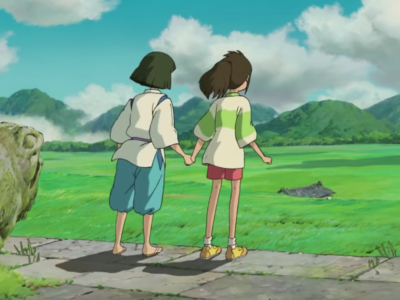I still remember the memory as vividly and clear as a VHS tape. It took place the summer before going into the fourth grade, and I felt as fresh as any nine-year-old on a summer day in 2008 could feel. After a day spent outside riding bikes, playing hour-long games of Monopoly with my cousins and chasing the few ice cream trucks that went down our street, nighttime approached.
The temptation of summertime at night called and reeled me back inside of my house. Sometimes my mom did too.
Summertime at night usually meant PictoChatting my sister on my DS who slept on the bunk on top of me, watching a couple of episodes of Full House on the Nick at Nite channel and finally falling asleep at the whopping hour of 11 p.m. while trying to find Mario’s six golden coins on Super Mario. To put it simply, life seemed great. Little did I know my life would soon change entirely.
It would only take exposure to some fantasy, great storytelling and Japanese animation.
As I made my way to my room in my pjs one night, DS and juice box in hand, I noticed my brother sprawled out on his bed on his iPod. You see, there existed many occasions where I came into the same room and stumbled across this same predicament. Usually whether I saw my brother jamming out to a song his heavy metal band had just recorded or doing literally anything else, I couldn’t really care less.
However, this time the same scene appeared slightly different, and I immediately took a double take at what played on the small screen of his iPod. I hovered close over him, both perplexed at the idea that my 17–year–old brother still watched cartoons and how these cartoons looked different from any other I had ever seen. Only years later would I recognize the scene from Hayao Miyazaki’s Spirited Away as Lin takes Chihiro to the train station in order to save Haku from dying. I guess I annoyed my brother as I hovered over him, asking him the typical nine-year-old movie questions, “Who is that? Why are they doing that? Why? WHY? Whyyy?” My brother promised to let me watch the whole movie from the beginning as soon as he finished if and only if I left him alone.
From the moment the iconic blue Studio Ghibli logo displayed itself across the screen, I became hooked.
Although I remember feeling pretty scared of the weird and unusual plot, as I learned every Studio Ghibli film would have, I fell absolutely in love with everything these weird yet beautiful animations offered. I mean, these did not seem like the ordinary cartoons I had witnessed on my afterschool rounds of Disney Channel, Nickelodeon and PBS Kids, plots that obviously tried to teach me about counting, the importance of kindness and stuff like that.
These plots entailed parents turning into pigs, magical wizards and witches, curses that turned people old, talking cats, spirits, quests and even human daily life. They had grand colors and realistic character movements and emotions. Whatever Studio Ghibli characters ate, I wanted to eat too. Whenever they ran, I wanted to hop into the screen and run right alongside them, wherever they seemed to head.
Though the thought of my parents turning into pigs and becoming trapped inside of a spirit world scared the living daylights out of me, Spirited Away became my new favorite movie. I spent my days watching and re-watching this one movie, telling anyone who would listen that they too should watch this amazing movie because for the first time, a plot did not fall into the typical American animation rabbit hole that resulted in forced happy endings and crude jokes.
As I got older, I discovered that Studio Ghibli movies always somehow leaked into most areas of my life.
Needed an idea for my fictional character analysis essay in English class? Maybe I could write on the great wolf riding warrior San in Princess Mononoke. Became in dire need of something to draw to get rid of my artist’s block? Maybe I should try redrawing Howl’s moving castle for the tenth consecutive time. Needed a way to escape my stressful life as a college student with three finals in the same week? Maybe I should pack a block of cheese in a picnic basket and go on a quest to save my true love/dragon friend from dying. The only problem: I didn’t have a true love/dragon friend in need of help, so I compromised to just curling up and watching the movie in my dorm room instead.
Now I wonder why even as a teenager and adult I still have these seemingly unrelated characters and plots based off pure fantasy of one man’s imagination heavy on my mind. Although I have not yet outgrown these films, occasionally something inside of me wants to outgrow them so that I could move on and become interested in whatever else people my age show interest in. But not until recently in my young adult years as I ponder about these films do I realize the truth about these “cartoons.”
While Studio Ghibli movies don’t noticeably preach to me numbers, ABC’s or the importance of recycling, their characters teach me so much more about life in general.
They teach me what true friendship and love looks like and how to grow as an individual through courageously stepping out of my comfort zone. Most of all, they teach me an active imagination and willingness to explore will be the single asset that would get me farther than any other technical knowledge or skill, and this offers value worth holding onto for a very long time.



















